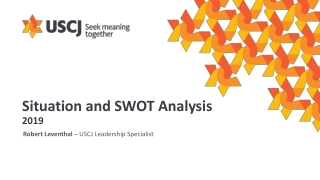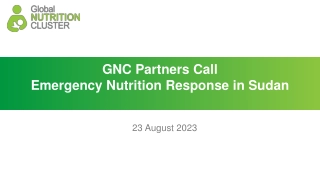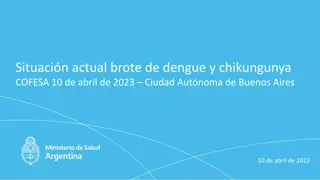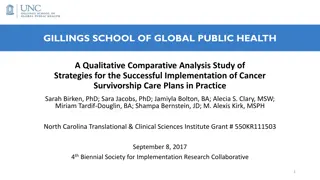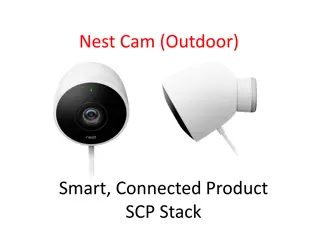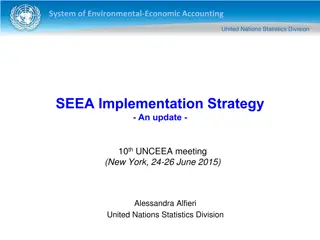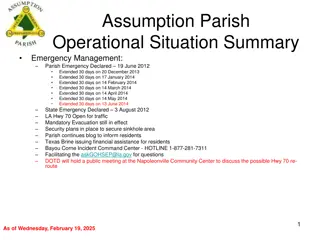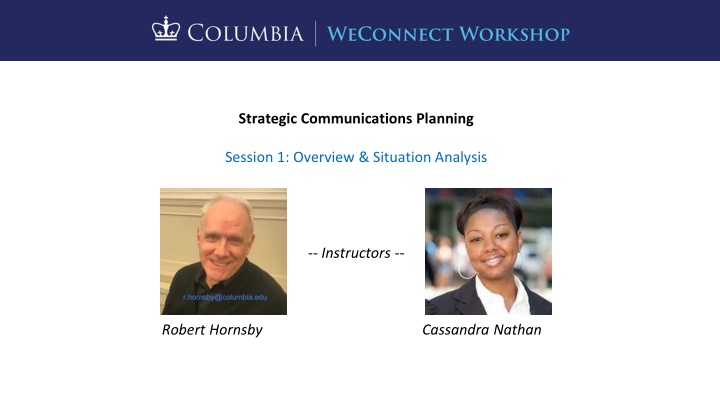
Strategic Communications Planning Session: Overview and Situation Analysis
Dive into the essentials of strategic communications planning with a focus on defining priorities, allocating resources, and setting impactful goals. Learn how to effectively communicate with specific audiences, establish clear purposes, and measure outcomes for successful communication strategies.
Download Presentation

Please find below an Image/Link to download the presentation.
The content on the website is provided AS IS for your information and personal use only. It may not be sold, licensed, or shared on other websites without obtaining consent from the author. If you encounter any issues during the download, it is possible that the publisher has removed the file from their server.
You are allowed to download the files provided on this website for personal or commercial use, subject to the condition that they are used lawfully. All files are the property of their respective owners.
The content on the website is provided AS IS for your information and personal use only. It may not be sold, licensed, or shared on other websites without obtaining consent from the author.
E N D
Presentation Transcript
Strategic Communications Planning Session 1: Overview & Situation Analysis -- Instructors -- Robert Hornsby Cassandra Nathan
Overview -- Course Basics: Seminar format weekly topic, discussion, homework, critique, repeat. Seminar goal in 6-8 weeks you will have a workable and presentable plan. Strategic Communications Planning is a shared responsibility and a team sport. You will collaborate with: o Your teammates in this class, and o Your supervisor and/or coworkers in your school, dept., institute or unit. Teams 3-4 people each: You will read and comment on each other s homework. They are your partners in breakout sessions during Zoom class.
Class objective Your communications plan is the tool to help you define priorities, plan ahead, allocate time and other resources, as well as make a good case for obtaining any additional resources you need to fulfill your mission. The methodology we teach can apply to an entire school, a department, an institute or center, and to any business or service unit.
Class objective Your communications plan is the tool to help you define priorities, plan ahead, allocate time and other resources, as well as make a good case for obtaining any additional resources you need to fulfill your mission. The methodology we teach can apply to an entire school, a department, an institute or center, and to any business or service unit. Do not worry about getting it right in your first drafts. This is a process. Through the next few weeks, we will work collectively to help everyone hit their targets.
Overview -- Three pillars of Strategic Communication Planning: Audience -- To whom are you communicating? Purpose Why are you communicating? Serving what goal? Impact After communicating, what outcomes do you seek?
What works an example: Audience Faculty at peer institutions that we would hire. Purpose Hire more faculty who are people of color. Impact 20% increase to faculty of color over next five years
What doesnt work empty terms: Audience Everyone Purpose Creating awareness Impact Increased audience awareness
Overview -- Elements of a Strategic Communications Plan: 1. Situation Analysis: Where are you today? 2. Goals: Why do you need to communicate and how do you define success? 3. Strategy: What is the organizing idea(s) of the plan? 4. Tactics: How do you deliver on your strategy & goals -- with which activities? 5. Metrics: Which data do you capture to know how you re doing? 6. Evaluation: In what ways can you judge and report the success of the plan?
Situation Analysis: The big question is this -- Where are you today, really? Who is your audience(s), what do they know, and how do you reach them? Compile an inventory or map of your assets, such as: o Written materials o Website(s) o Graphics o Photography o Videos o Podcasts o Other
Institutional Goals: Institutional Goals are usually about growth or increase, but could be about stability or other attributes. Institutional Goals most often deal with quantifiable attributes, such as numbers of students, faculty positions, and funding of research projects or construction projects Q: Where do you find the Institutional Goals for your organization?
Institutional Goals: Institutional Goals are usually about growth or increase, but could be about stability or other attributes. Institutional Goals most often deal with quantifiable attributes, such as numbers of students, faculty positions, and funding of research projects or construction projects Q: Where do you find the Institutional Goals for your organization? o Mission statement o Annual report o Dean s letter(s) o Fundraising proposals o Admissions materials o Other?
Situation Analysis -- Audience questions: 1. Who are your audiences? (Segment them by demo/size/involvement?) 2. Is there a hierarchy? (Is any audience more important or more critical now?) 3. What is your profile? What do your audiences know about you now? (Key attributes, mission, services, etc.) 4. What is their current perception of you? (Sentiment - positive, negative neutral?) 5. What are the platforms you use? (Website, social media, news articles, other?)
Situation Analysis -- Purpose questions: 1. What does your unit hope to accomplish in the next six months or the next year? 2. Is there a hierarchy? (Is any action more important or more critical now?) 3. Are there new or emerging purposes?(Has Covid or some other force changed what your organization can do or what it wants to do?) 4. Does your organization have the resources it needs to accomplish its goals, i.e. financially, personnel, partnerships, etc.?
Situation Analysis -- Outcome questions: 1. What would be the very best outcome for your organization in the next six months to a year? 2. How would that directly benefit the organization? 3. How would that benefit your audience(s)? 4. What data markers or milestones would indicate that your organization has achieved or surpassed its goals?
Situation Analysis -- Internal questions: What is your current personal workflow/schedule/regularity of activities or obligations? What s your current allocation of resources across various communications activities? (other people s roles, their time daily/weekly/monthly) o What are the tasks at hand? o What order do they follow? o Who handles which task? In your plan, the Situation Analysis is where you can make your case for your needs: o A new direction or change to priorities, o A change of roles or responsibilities, o Request more resources financial, personnel, equipment, training, etc.
Situation Analysis -- Internal questions: These questions are important, but confidential... How do you understand and feel about the current situation? Candid & private questions to ask yourself are you: o Overworked?, o Under-utilized? o Lacking resources? o Are you & your unit focused on correct priorities? It can be cathartic to write this out but not necessarily to include in your final plan.
Situation Analysis -- Breakout Rooms: 1. Introduce yourself to your teammates. 2. Each team member makes a quick list of answers to these questions: o Who is your primary audience? (without saying everyone ) o What is a primary purpose? (without saying awareness ) o What is a primary outcome you seek? (omitting awareness )
Situation Analysis After Breakouts: Discussion questions: 1. How is your list similar to your teammates? How is it different? 2. Could any of the pillars articulated by your teammates also apply to your school, dept., institute or unit?
Situation Analysis - Observation & wrap-up: Discussion & brainstorming. Homework 1-page (minimum) Situation Analysis due next week.
Contact: Robert Hornsby r.hornsby@columbia.edu Cassandra Nathan cm2891@columbia.edu

